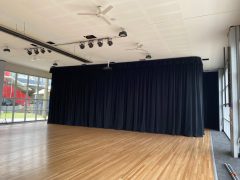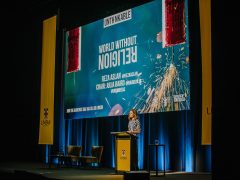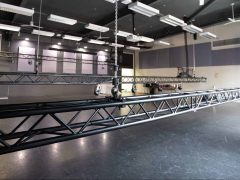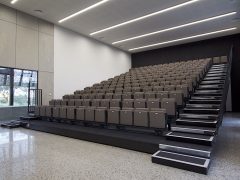Obsidian Control Onyx vs Chroma-Q Vista Lighting Control Systems
In this article we will be comparing two prominent lighting control systems on the market, Obsidian Control Systems and Chroma-Q Vista. A comparison over both hardware and software are made in the hopes that it will allow you, the reader, to make informed decisions about which lighting control system is best for you and the space you are working in.
Onyx Hardware Line-up
Onyx has been on the market for quite some time now, it was formerly known as Martin M-PC until the division was sold to Elation. Under Elation’s development team massive improvements have been made to the software that now make it one of best value for money options on the market. In addition to the high-quality software, Obsidian markets several high-quality PC control wings and lighting desks. These control desks have ample physical connectivity with the mid ranged NX Wing having 4 DMX ports that can also be configured to DMX in ports. In addition to this, the NX wing also has MIDI Inputs and a SMPTE Timecode input. The console also sports a fully featured programming area that gives a familiar feel to any operator or programmer who uses command-line based consoles. In addition to this the NX Wing also has 10 Faders, 4 Encoders wheels and 8 customisable playback buttons. This wing, however, serves as an entry to Obsidian’s control surfaces, they also make a fully-fledged console for those events that require maximum control. This console is the NX4 and sports a total of 44 playbacks, there are 10 Main motorised faders, 12 Sub faders and 22 Executor buttons. This console has all the I/O one could ever need with MIDI, SMPTE Timecode and 4 DMX ports. Networking wise the console also has 2 Ethercon ports. This console also has some very powerful internal hardware being powered by a 5 core Intel processor. The console also has extremely fast disk I/O thanks to its built in NVMe drive which lowers boot up times and increases system responsiveness.
Obsidian Onyx Software
Onyx is very easy to get up and running, its modern user interface allows it to be easily controlled by people of all abilities and skill sets. Onyx also allows you to customise each page of its user interface so that you can see what is most important. What really stands out in Onyx is the Dylos effects/Pixel Mapping engine. Dylos has over 1100 built in effects/media files with more effects being able to be added by the user. Dylos supports a vast array of media file formats and codecs which makes it extremely flexible. Users also have up to 128 Universes of Pixel control depending on the purchased license and Dylos can also be used for free with a maximum 2 Pixel zones.
Chroma-Q’s Vista hardware Line-up
Vista was originally developed by JANDS before this part of the business was sold to Chroma-Q. Under Chroma-Q’s ownership Vista has been developed into an even more reliable software platform and a new line of control surfaces has been released, the MV and EX control surfaces. Vista’s entry level control surface, the MV, sports 5 faders and 15 executor buttons. For connectivity the MV has 2 DMX ports and USB-B port for connection to any Windows or Mac computer. The MV is not really suited to large scale events due to the lack of connectivity it has but serves smaller events well. The largest control surface Chroma Q offers is the EX which has 12 playback faders, 60 playback buttons and features encoder wheels and a programming area unlike the MV. Connectivity wise, the MV has 2 DMX ports and a USB-B port. Again, the connectivity on this console leaves something to be desired but this is certainly offset by the number of executors on the board and the fact that it has a programming section. Other than these two control surfaces no other consoles/surfaces are being produced by Chroma-Q, there were consoles and control surfaces that were made by JANDS, the M1, S1, S3 and flagship L5, however, these are legacy products and are no longer manufactured.
Vista Software
Vista is distinctively different to other lighting control systems; it is not command line based. Efforts have been made by Chroma-Q in the latest release of Vista, Vista 3, to implement command-line functionality but don’t expect it to behave like Onyx or really any other command-line based lighting system. The Vista control surfaces themselves do not have traditional keypads or programming buttons found on Onyx and other systems which only serves to enhance the difference between Vista’s command-line interface and the command-line interface of Onyx and other systems. This difference, however, is not to Vista’s disadvantage. Vista is a very easy to program and allows you to create simple effects quite easily. However, when it comes to more advanced effects, especially, Pixel Mapping, Onyx is superior. Onyx easily outclasses Vista with regards to effects generation, the way you can map effects(Geometry) and the type of media(Codecs, File formats) you can upload to the software. Vista is extremely limited in these areas.
In A Nut Shell
Both platforms are easy to use, with their unique strength and features. Onyx offers more advanced features and has a larger customer base of professional users.




